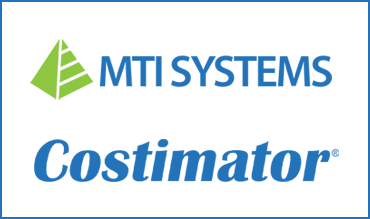-
-
Phone: 413-733-1972
Cost Estimating Saves OEMs Time and Money
Cost Estimating Saves OEMs Time and Money
 David P. LaJoie is vice president of MTI Systems Inc. (West Springfield, MA), developer of the Costimator OEM cost estimating and shop management software.
David P. LaJoie is vice president of MTI Systems Inc. (West Springfield, MA), developer of the Costimator OEM cost estimating and shop management software.
Manufacturing Engineering: What type of companies are using computer-aided cost-estimating software?
David LaJoie:
In the past, Costimator was strictly used by job shops to develop cost estimates faster with more accuracy and consistency than manual methods would allow. Over the past few years since the economy has been in a decline, we've found that more OEMs want to use our software, even more so than job shops.
ME: How does the Costimator OEM software work for automotive manufacturers and other OEMs?
LaJoie:
Costimator OEM provides manufacturers with the knowledge they need to identify and understand the cost drivers in parts they design, make, and purchase. Our software allows them to determine the actual cost of manufacturing a part, both in the design stage and with parts they currently make themselves or outsource to suppliers. Once they have this information, OEMs can make informed decisions on part designs, whether they should make a part in-house or send it out, and most importantly, what they should be paying. The software comes with industry time standards elements and allows for three levels of estimating. The process, or detail level, allows the user to create a cost estimate looking at how a part should be made, operation by operation. The other two levels use parametrics to calculate costs. Feature-based estimating, which is used mostly by design engineers, allows calculating costs based on part features, such as holes, slots, etc. The software's Configurator level enables looking at a company's historical cost data and generates cost estimates through regression analysis tables within our systems IQ Builder module.
ME: What estimating method do most OEMs use to arrive at fair-cost estimates?
LaJoie:
In most cases, they use the detail method. Some OEMs will use this method to mimic each of their suppliers' equipment and methods to arrive at a cost. Most OEMs develop these "should-cost" models by determining what the cost of a part would be if they had all the best equipment in the world. Costimator OEM comes with more than 1700 work centers and processes already built into the system, so playing a 'what-if' scenario that compares cost effects of using various processes and equipment is straightforward.
ME: Does this estimating software work with other manufacturing software?
LaJoie:
Our software is written in Visual C++ and is compliant with the ODBC [Open Database Connectivity] standard so it can be easily integrated with enterprise systems; we have several partnerships with ERP and MRP companies, including Lilly Software and Made2Manage, where we have developed links to their software.
ME: Why would OEMs in the automotive or aerospace industries want this type of cost-estimating?
LaJoie:
OEMs want to lower their part costs. Since most OEMs outsource a large percentage of their parts, keeping costs to a minimum is a key for them to stay competitive in today's marketplace. Our software gives OEMs the knowledge they need to leverage lower pricing. When they go to a supplier to seek a price reduction, they can now justify why they think it's warranted.
ME: Automotive OEMs have been demanding cost concessions from parts suppliers for years; doesn't this put even more pressure on suppliers?
LaJoie:
I would say that it makes everyone more aware of how parts are made and the costs involved, creating the possibility that there may be a better, more cost-effective way to make the part. The goal is not to pressure suppliers, but instead for the supplier and OEM to communicate more effectively to understand what drives the cost of parts. Ultimately this will produce the best method of making a part, profiting everyone involved.
"The goal is not to pressure suppliers."
ME: What can OEMs do with the Shop Rate Calculator software module?
LaJoie:
The Shop Rate Calculator program is a tool we developed with several of our customers to provide an accurate method for calculating shop rates for various manufacturing activities. The program combines actual labor rates as reported by the Bureau of Labor and Statistics with other cost factors to compute a shop rate. Our OEM customers use the tool to determine what their suppliers should be charging them for shop rates.
ME: What kind of OEMs use the system as a cost-reduction tool?
LaJoie:
Our customer base is pretty widespread, covering industries such as automotive, aerospace, electronics, and construction equipment. We deal with many of the Fortune 500 companies, including Caterpillar and Boeing. There is a definite need out there to understand and drive down costs, not only to remain competitive but to stay in business. Our software helps companies do that.
Copyright © 2003 Society of Manufacturing Engineers

Costimator®
Cost Estimating Software for Manufacturing
-
Cost Estimating Sheet Metal
-
Estimating for Machined Parts
-
Quoting for Machining and Fabrication




